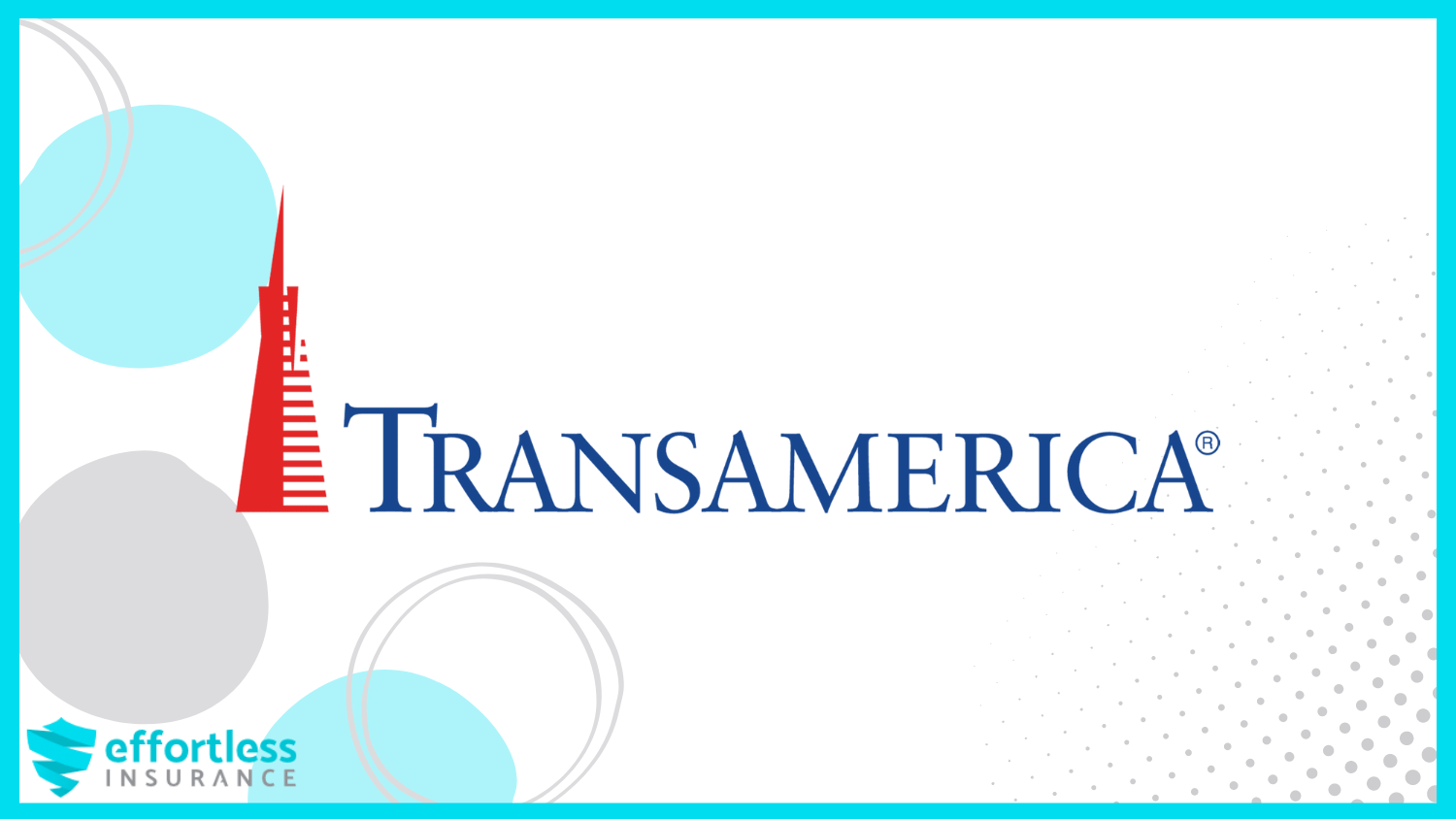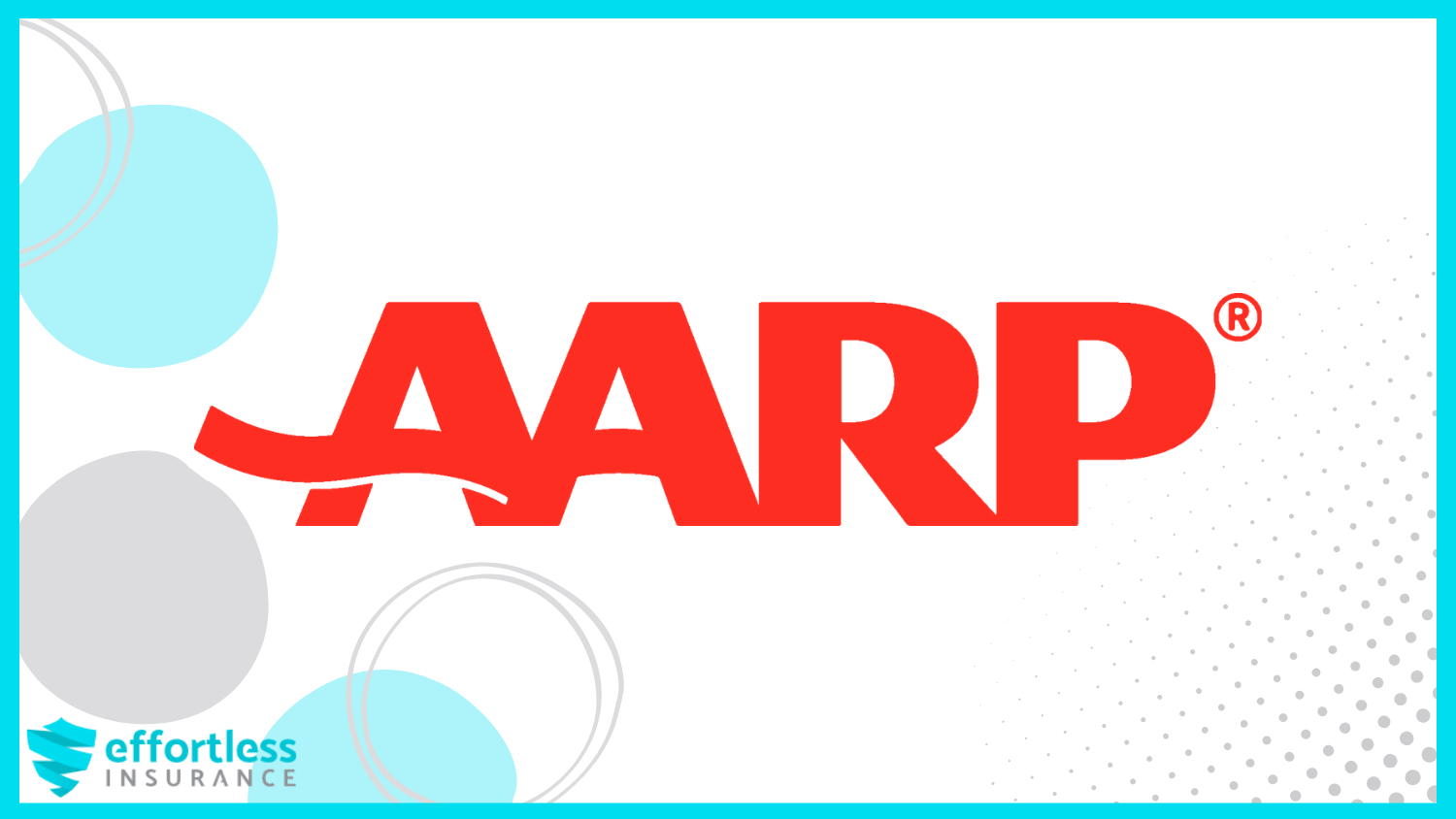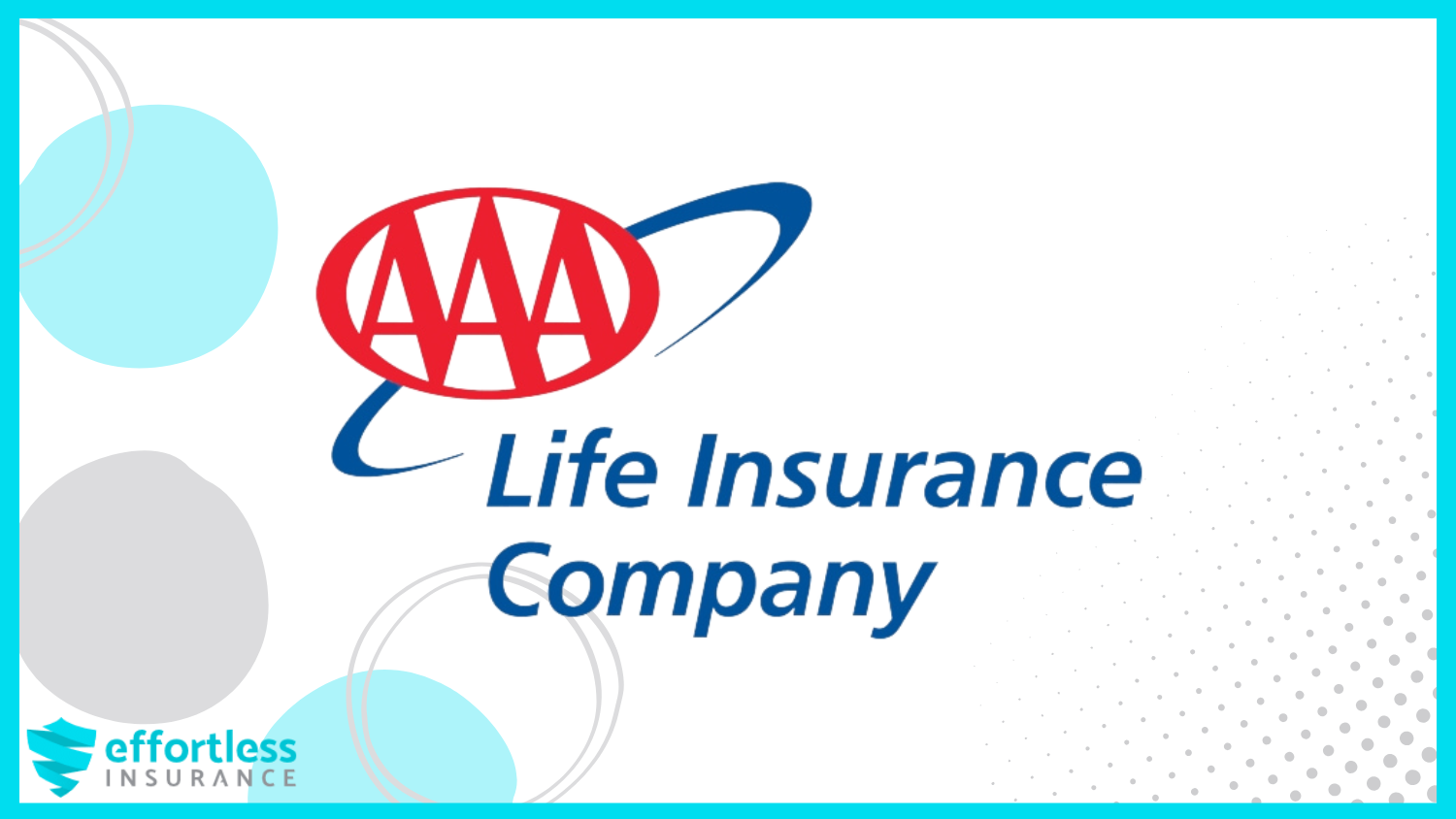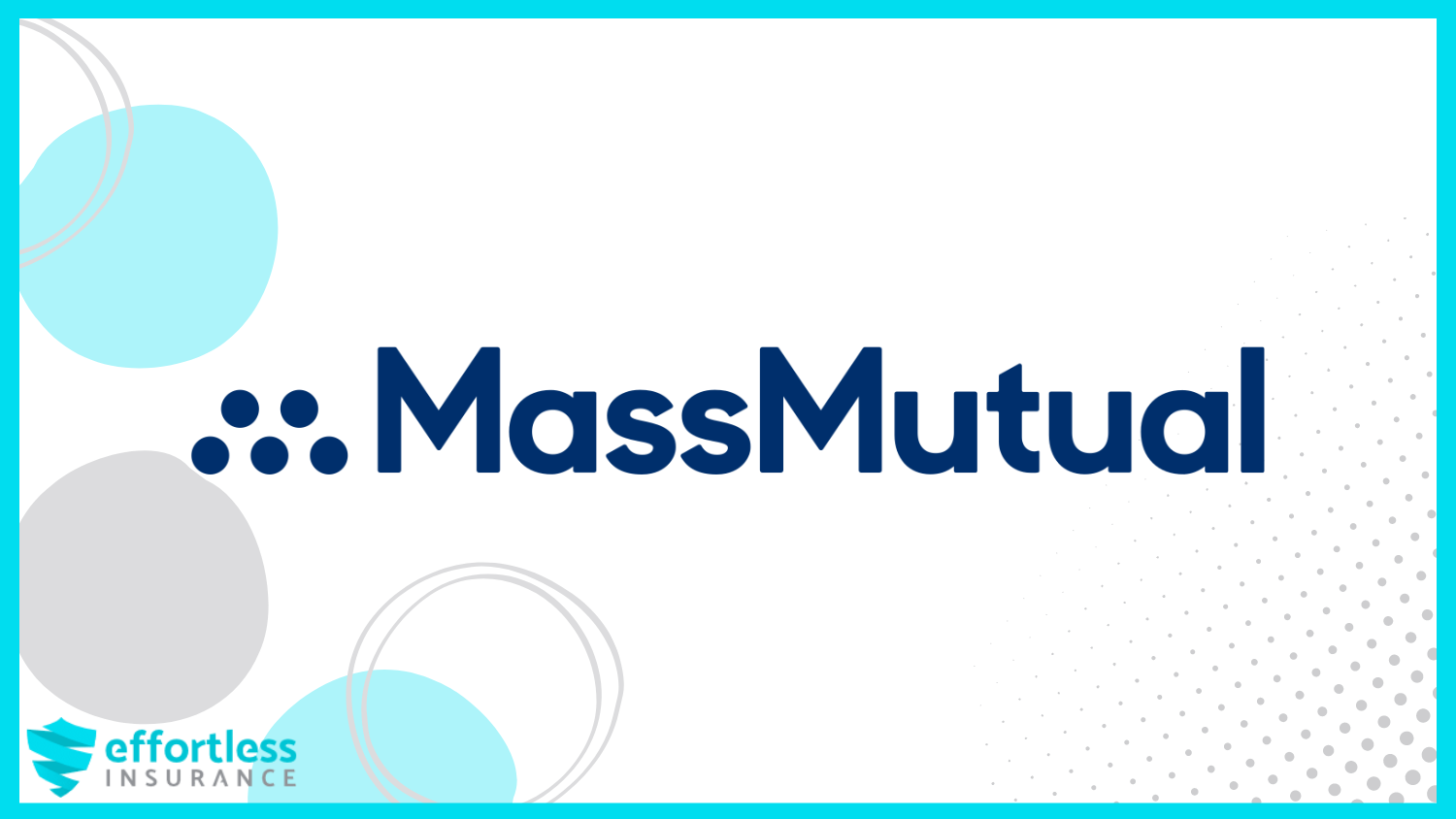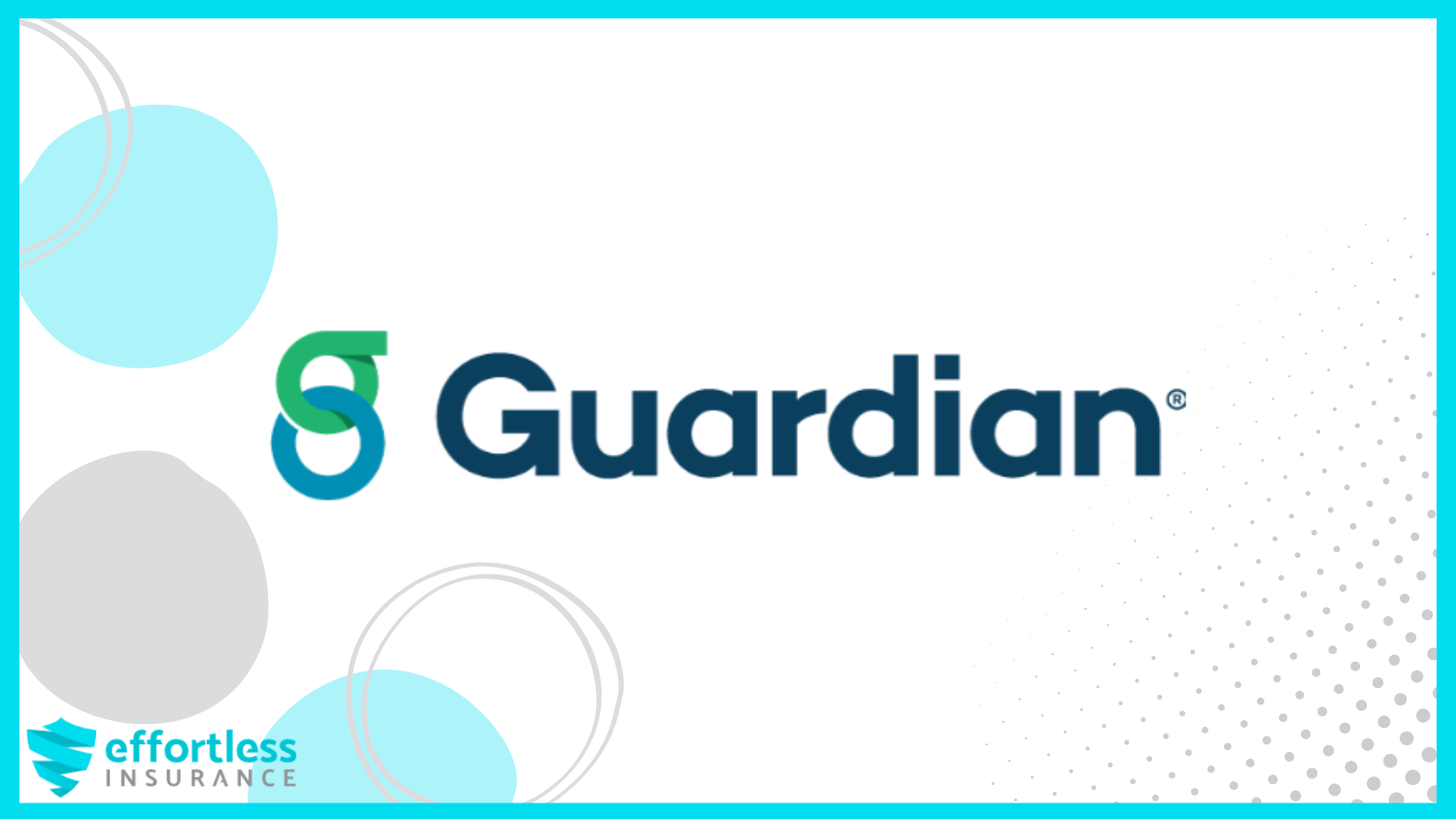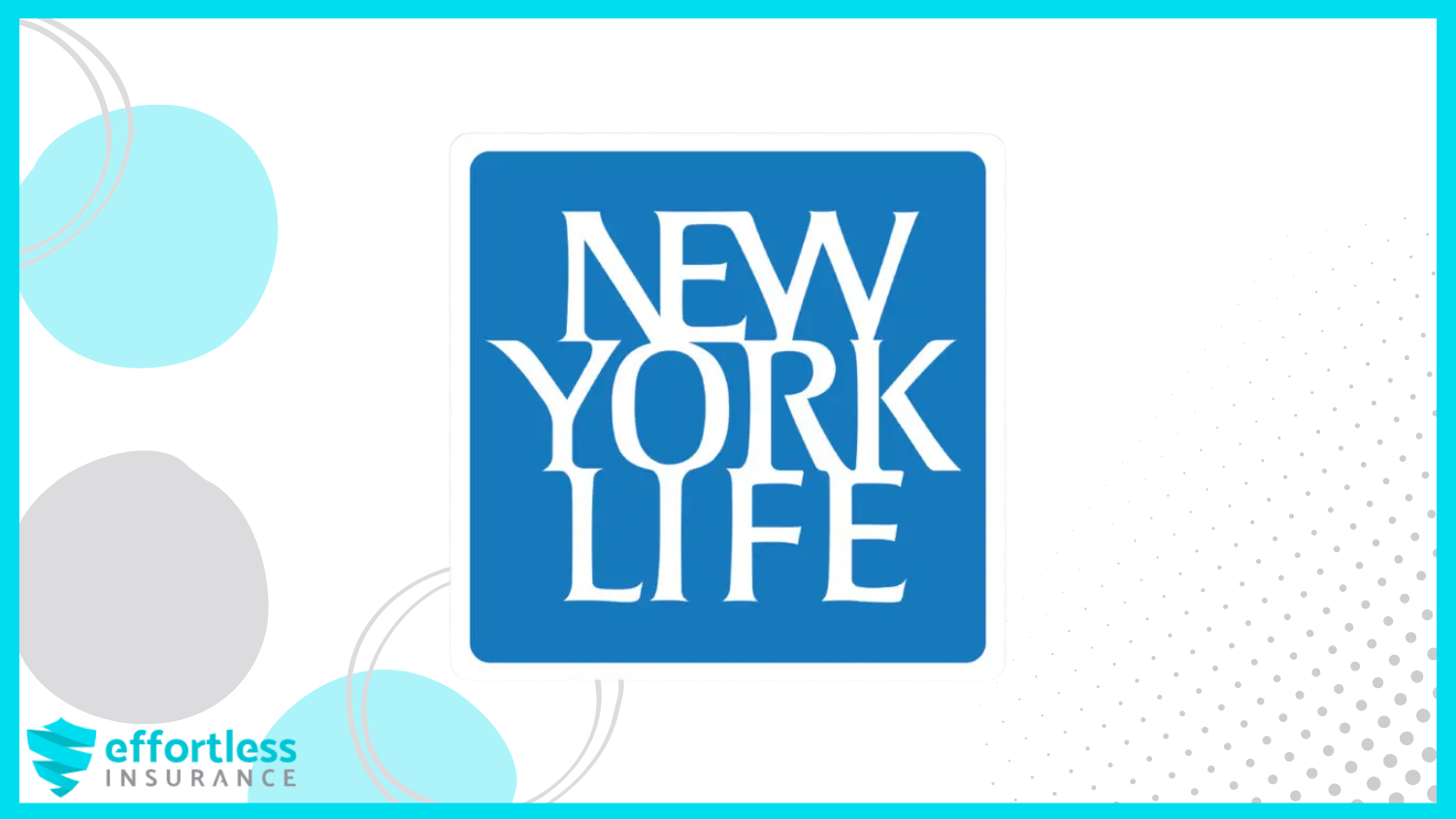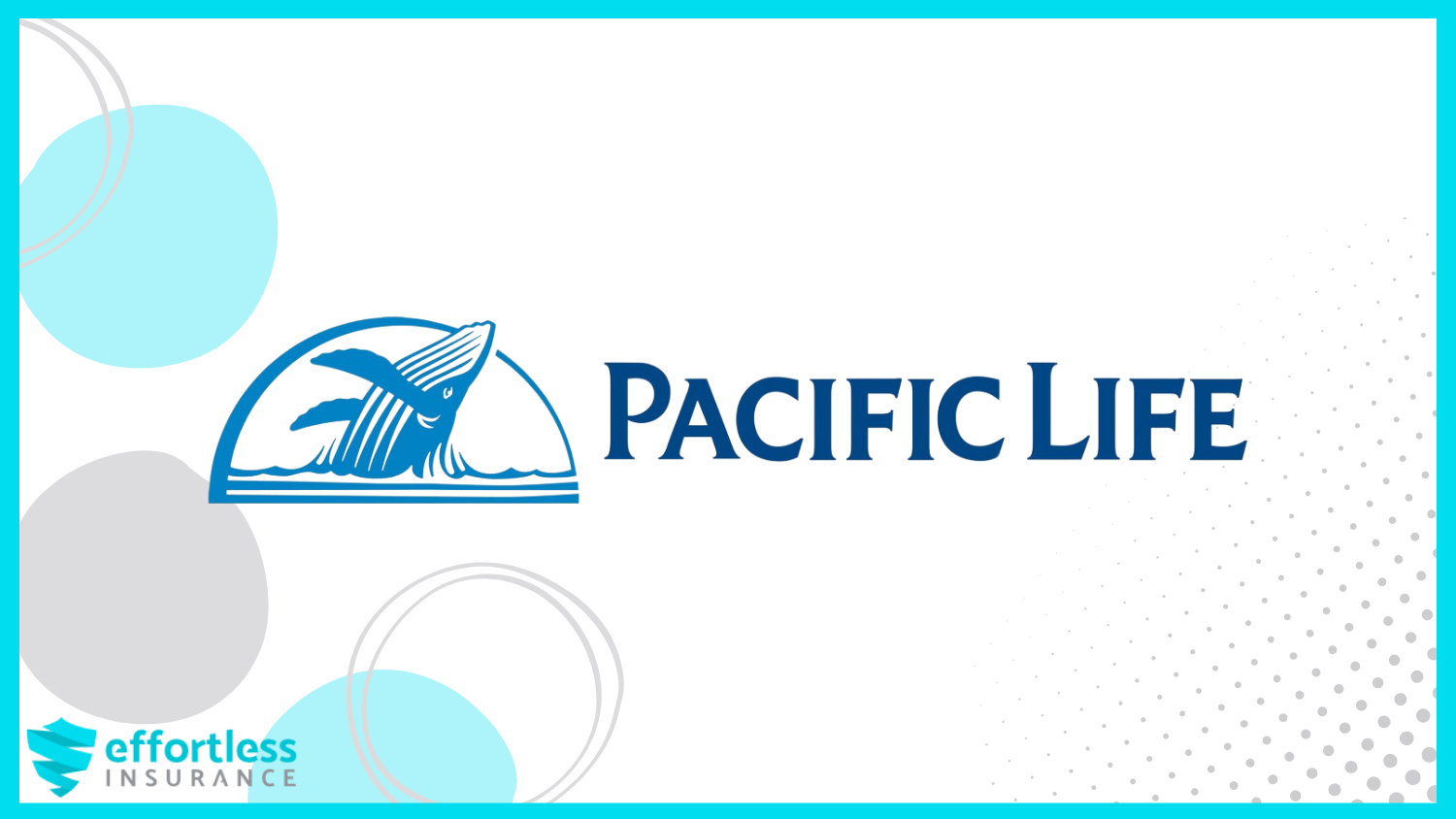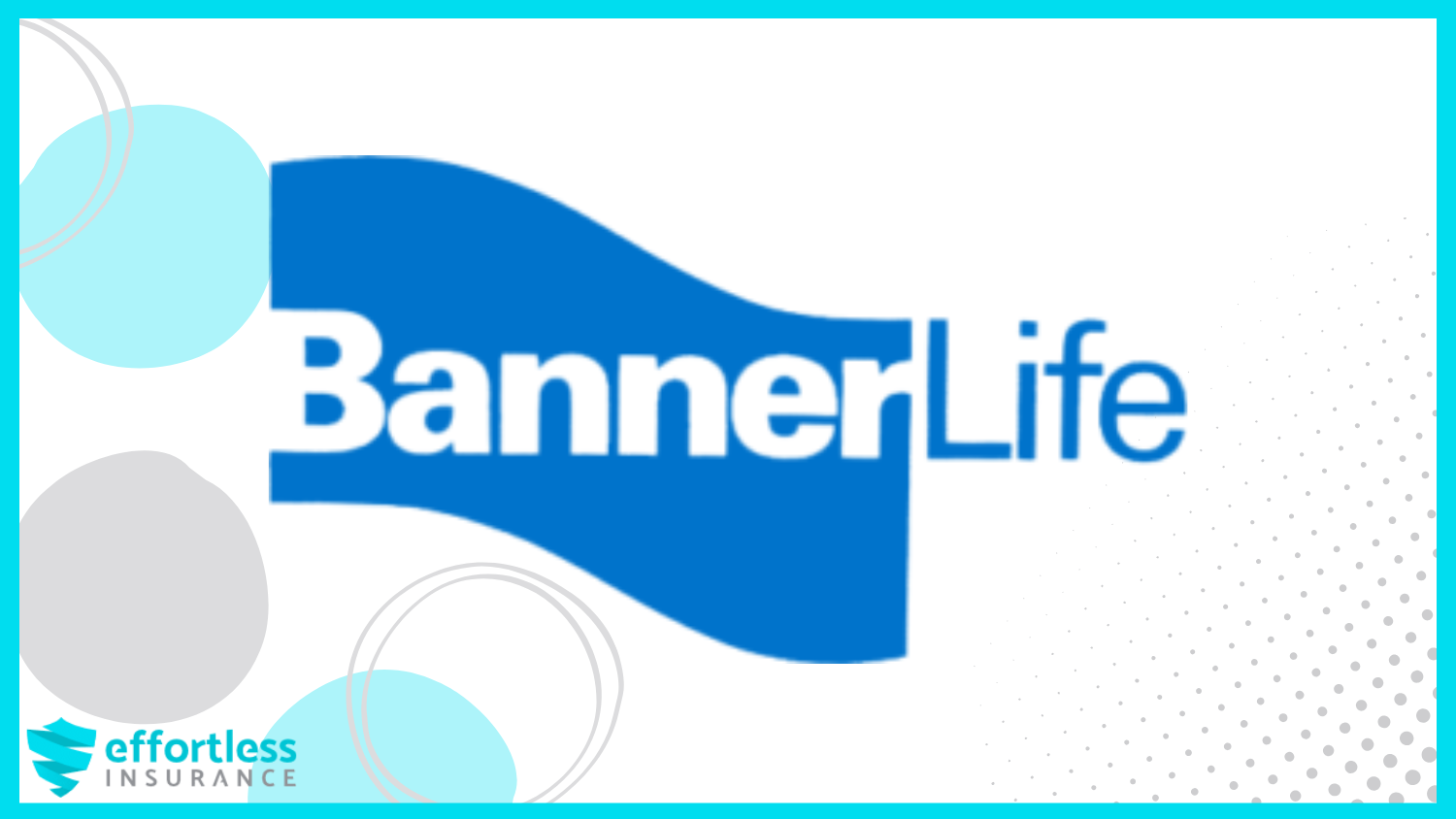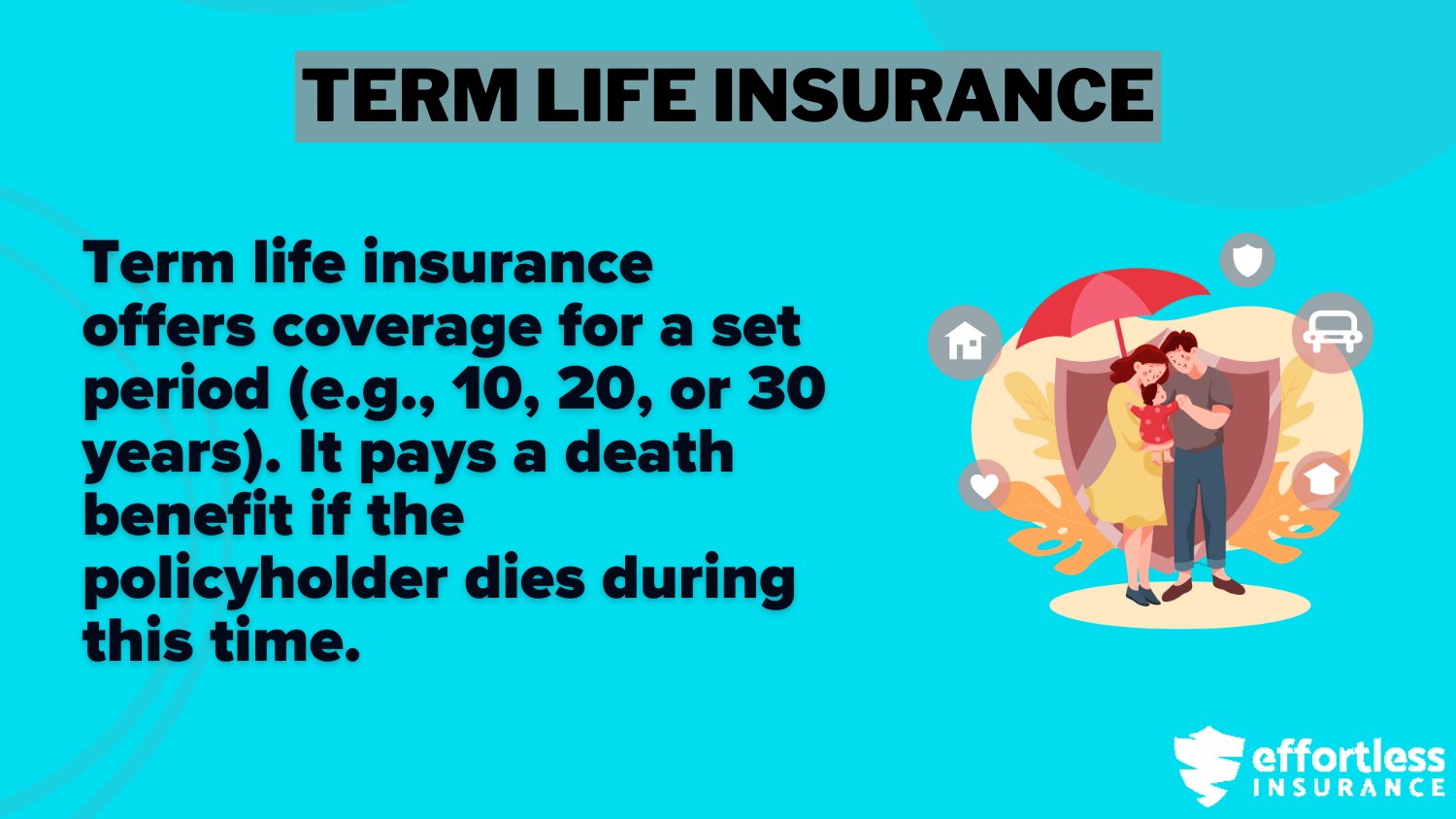Best Life Insurance for 40-Year-Olds in 2025 (Check Out the Top 10 Companies)
The best life insurance for 40-year-olds includes Transamerica, the top pick overall, with plans starting at $38 a month. AARP is great for senior benefits, and AAA stands out for member perks. These options offer affordable rates, flexible plans, and extras to fit your needs at 40.
Free Life Insurance Comparison
Compare Quotes From Top Companies and Save
Secured with SHA-256 Encryption
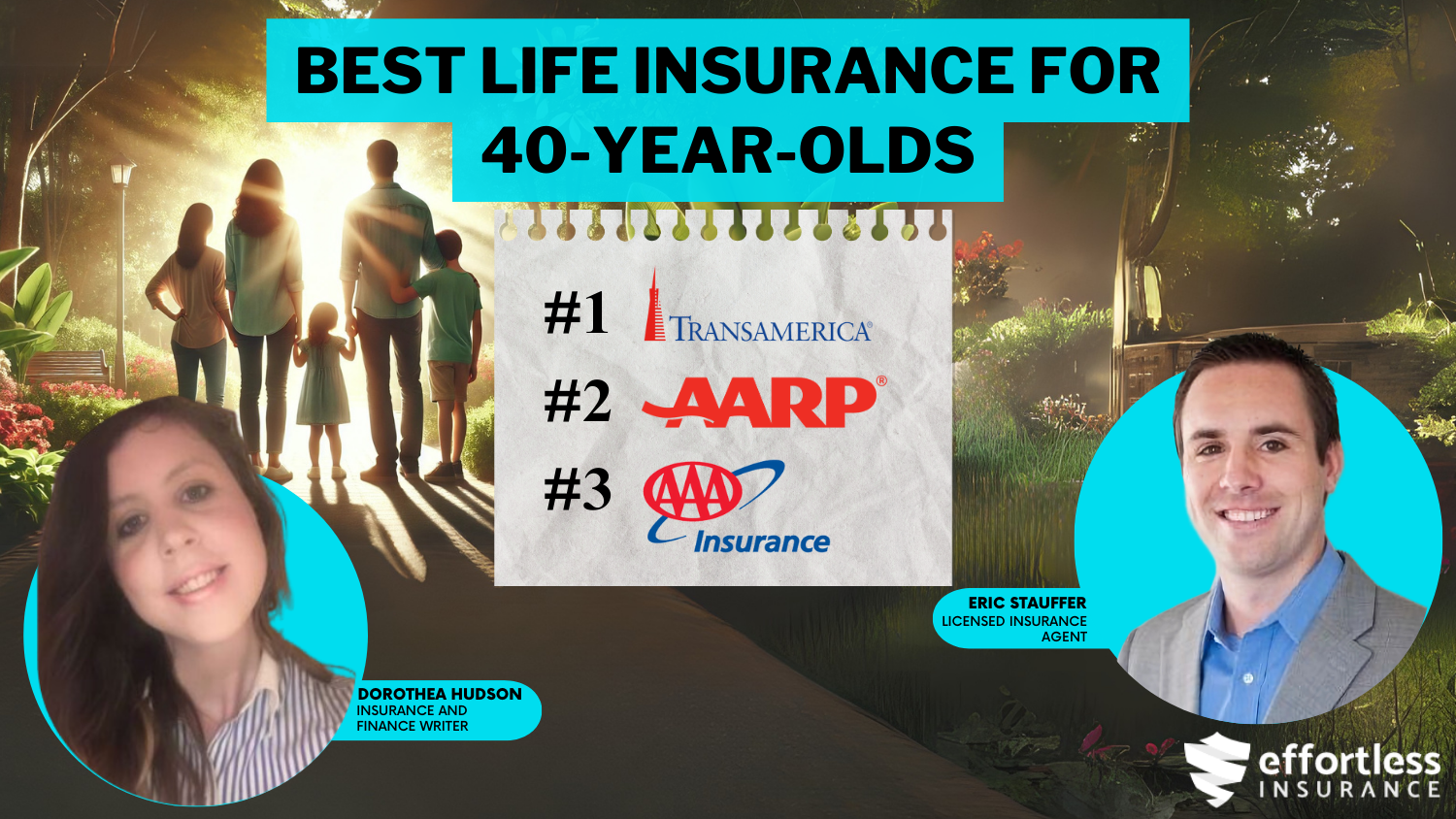
Eric Stauffer
Licensed Insurance Agent
Eric Stauffer is an insurance agent and banker-turned-consumer advocate. His priority is educating individuals and families about the different types of insurance coverage. He is passionate about helping consumers find the best coverage for their budgets and personal needs. Eric is the CEO of C Street Media, a full-service marketing firm and the co-founder of ProperCents.com, a financial educat...
Licensed Insurance Agent
UPDATED: Jan 26, 2025
It’s all about you. We want to help you make the right coverage choices.
Advertiser Disclosure: We strive to help you make confident life insurance decisions. Comparison shopping should be easy. We are not affiliated with any one life insurance provider and cannot guarantee quotes from any single provider. Our life insurance industry partnerships don’t influence our content. Our opinions are our own. To compare quotes from many different companies please enter your ZIP code on this page to use the free quote tool. The more quotes you compare, the more chances to save.
Editorial Guidelines: We are a free online resource for anyone interested in learning more about life insurance. Our goal is to be an objective, third-party resource for everything life insurance related. We update our site regularly, and all content is reviewed by life insurance experts.
UPDATED: Jan 26, 2025
It’s all about you. We want to help you make the right coverage choices.
Advertiser Disclosure: We strive to help you make confident life insurance decisions. Comparison shopping should be easy. We are not affiliated with any one life insurance provider and cannot guarantee quotes from any single provider. Our life insurance industry partnerships don’t influence our content. Our opinions are our own. To compare quotes from many different companies please enter your ZIP code on this page to use the free quote tool. The more quotes you compare, the more chances to save.
On This Page
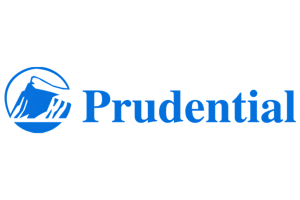 0 reviews
0 reviewsCompany Facts
Whole Policy That Covers Impaired Risk
A.M. Best
Complaint Level
 0 reviews
0 reviews 163 reviews
163 reviewsCompany Facts
Whole Policy That Covers Impaired Risk
A.M. Best
Complaint Level
 163 reviews
163 reviews 0 reviews
0 reviewsCompany Facts
Whole Policy That Covers Impaired Risk
A.M. Best
Complaint Level
 0 reviews
0 reviewsThe best life insurance for 40-year-olds includes top picks like Transamerica, AARP, and AARP, offering affordable rates starting at just $38 a month. Transamerica is the top choice overall, thanks to its low rates and solid coverage options.

Your circumstances, overall health, liabilities, and income are some of the variables you should consider before picking the type of life insurance coverage best for you. In this post, I will present the rates and plans you can purchase in your forties.
Our Top 10 Company Picks: Best Life Insurance for 40-Year-Olds
| Insurance Company | Rank | Bundling Discount | AM Best | Best For | Jump to Pros/Cons |
|---|---|---|---|---|---|
| #1 | 10% | A | Cost Efficiency | Transamerica | |
| #2 | 5% | A | Senior Benefits | AARP | |
 | #3 | 10% | A | Member Benefits | AAA |
| #4 | 10% | A++ | Comprehensive Coverage | MassMutual | |
| #5 | 10% | A++ | Policy Customization | Guardian Life | |
| #6 | 15% | A++ | Financial Strength | Northwestern Mutual | |
 | #7 | 12% | A++ | Legacy Planning | New York Life |
| #8 | 10% | A+ | Customer Service | Mutual of Omaha | |
| #9 | 10% | A+ | Retirement Planning | Pacific Life | |
 | #10 | 10% | A+ | Health Conditions | Banner Life |
Transamerica is the top choice overall, thanks to its low rates and solid coverage options. AARP is another excellent option, especially for people who want a simple plan without a lengthy approval process.
These companies offer great prices, flexible plans, and reliable coverage. Whether you want to take care of your family or plan ahead, they have easy options for 40-year-olds looking for life insurance. Enter your ZIP code to start comparing premiums from highly-rated insurers in your area.
- Find the best life insurance for 40-year-olds with rates starting at $38 per month.
- Affordable and flexible plans meet the needs of those looking for reliable coverage.
- Top picks include Transamerica, AARP, and AAA for the best value and options.
Free Life Insurance Comparison
Compare Quotes From Top Companies and Save
Secured with SHA-256 Encryption
#1 – Transamerica: Overall Top Pick
Pros
- Affordable Coverage: Transamerica gives you great value with life insurance for 40-year-olds starting at just $40.
- Flexible Policy Options: They offer different policy choices for 40-year-olds, so you can pick one that fits your needs.
- Reliable Coverage: It’s a solid choice for long-term life insurance for 40-year-olds, with fixed payments, letting you relax knowing you’re covered for the future.
Cons
- Limited Riders: Some additional coverage options might not be available in all states for 40-year-olds. To learn more, visit our guide, “Transamerica Life Insurance Company Review.”
- Customer Support: While good, it may not be as accessible or responsive as other providers for 40-year-olds.
#2 – AARP: Best for Senior Benefits
Pros
- Affordable Rates: AARP offers one of the most budget-friendly options for Life Insurance for 40-Year-Olds, with policies starting at $35 for 40-year-olds.
- No Medical Exam: It’s easy and quick to apply for Life Insurance for 40-Year-Olds, with no medical exam required for coverage.
- Great Benefits for Seniors: AARP offers unique benefits as you age, making it a great choice for 40-year-olds planning for long-term needs.
Cons
- Limited Coverage Amounts: Life insurance for 40-year-olds may be more limited than other policies. Dive deeper in our guide, “AARP Life Insurance Company Review.”
- Basic Policy Options: It may not have as many customization options for 40-year-olds who want more flexibility in their coverage.
#3 – AAA: Best for Member Benefits
Pros
- Affordable and Reliable: AAA offers affordable coverage starting at $40 for 40-year-olds, with dependable protection.
- Member Discounts: As a member who is 40-Year-Olds, you can get special discounts and extra benefits.
- Long-Term Life Insurance: You can get coverage that lasts until you’re 100 or more, so you don’t have to worry about the future.
Cons
- Limited Availability: Life insurance for 40-year-olds through AAA may not be available in all areas. Get all the details in our guide, “AAA Life Insurance Review.”
- Basic Term Policy Options: You may not have as much flexibility in customizing the terms of your life insurance as with some other providers.
Compare Quotes From Top Companies and Save
Secured with SHA-256 Encryption
#4 – MassMutual: Best for Comprehensive Coverage
Pros
- Comprehensive Coverage: MassMutual has a lot of options for 40-year-olds looking for full coverage.
- Strong Financial Strength: MassMutual is known for being financially strong, so you can count on them to support your family.
- Flexibility in Policies: They offer flexible plans, including permanent coverage, perfect for life insurance for 40-year-olds.
Cons
- Higher Premiums: Premiums might be a little higher for 40-year-olds, starting at $50. Want more info? See our relevant guide, “10 Best Life Insurance Companies.”
- Complex Application Process: The application takes longer than other Life Insurance options for 40-year-olds.
#5 – Guardian: Best for Policy Customization
Pros
- Helping Hand: Guardian is good at helping you customize your life insurance for 40-year-olds to match what you need.
- Affordable Rates: Life insurance for 40-year-olds starts at just $38, so it’s easy on the budget. For a full breakdown, check our relevant guide, “Life Insurance by Age.”
- Strong Customer Service: Guardian is known for being friendly and quick to help when you need support with life insurance for 40-year-olds.
Cons
- Limited Policy Types: They might not have as many life insurance options for 40-year-olds as other companies.
- More Paperwork: Customizing your life insurance for 40-year-olds means more paperwork than a simple policy.
#6 – Northwestern Mutual: Best for Financial Strength
Pros
- Strong Financial Security: Northwestern Mutual is known for being financially strong so that you can feel confident in your policy.
- Affordable for 40-year-olds: Life insurance for 40-year-olds is budget-friendly, with plans starting at just $45. It’s a great deal for the support you get.
- Long-Term Stability: It’s a good choice if you’re looking for something reliable and stable for the future. Find more tips in our guide, “Northwestern Mutual Life Insurance Guide.”
Cons
- Higher Premiums: The premiums are higher than other options for life insurance for 40-year-olds.
- Complicated Policies: Some policies can be hard to understand, especially for new customers.
Compare Quotes From Top Companies and Save
Secured with SHA-256 Encryption
#7 – New York Life: Best for Legacy Planning
Pros
- Great Customer Service: Mutual of Omaha is really good at helping people and offering support whenever you need it, especially if you’re looking for life insurance for 40-year-olds.
- Affordable Coverage: Life insurance for 40-year-olds is a great deal, starting at just $45, making it easy on the budget.
- Easy Application: Applying for life insurance for 40-year-olds is easy, so it’s a smooth and hassle-free experience.
Cons
- Limited Coverage Options: There aren’t as many coverage choices as with more prominent companies. Discover more in our guide, “New York Life Insurance Guide.”
- Higher Rates: Premiums could increase quicker as you get older, especially if you’re looking for life insurance for older customers.
#8 – Mutual of Omaha: Best for Customer Service
Pros
- Excellent Customer Service: Mutual of Omaha is good at helping people and offering support, especially if you seek life insurance for 40-year-olds.
- Affordable Coverage: Life insurance for 40-year-olds is excellent, starting at just $45, so it’s easy on your budget. Want more details? Check our guide, “Mutual of Omaha Life Insurance Guide.”
- Simple Application: The application process is easy, so applying for life insurance for 40-year-olds is a smooth and straightforward experience.
Cons
- Higher Rates: Your premiums could go up faster as you get older, especially regarding life insurance for 40-year-olds.
- Limited Coverage Options: Some coverage options may be limited compared to more prominent life insurance providers for 40-year-olds.
#9 – Pacific Life: Best for Retirement Planning
Pros
- Great for Retirement Planning: Pacific Life is perfect to include life insurance for 40-year-olds in your retirement plan.
- Strong Financial Reputation: With solid financial ratings, Pacific Life gives you confidence in your coverage. For a deeper understanding, see our guide, “Open Care Senior Plan Review.”
- Affordable for 40-year-olds: Life insurance for 40-year-olds starts at just $48, which is an excellent deal for a good policy.
Cons
- Limited Policy Options: Some policy options, like term life insurance for 40-year-olds, might not be as flexible as you’d like.
- Fewer Discounts: There aren’t as many discounts or bundling choices for life insurance for 40-year-olds, even though the coverage is good.
Compare Quotes From Top Companies and Save
Secured with SHA-256 Encryption
#10 – Banner Life: Best for Health Conditions
Pros
- Affordable Coverage: Banner Life has affordable premiums starting at just $38, so life insurance for 40-year-olds is easy to get.
- Good for Health Conditions: Banner Life is an excellent option for people with pre-existing health conditions. It offers solid Coverage at competitive prices.
- No Medical Exam Option: You can get life insurance for 40-year-olds without needing a medical exam, making qualifying easier.
Cons
- Limited Benefits: Some extra benefits or riders may not be available with life insurance for 40-year-olds. To explore further, read our relevant guide, “Banner Life Insurance Company.” Review
- Less Brand Recognition: Banner Life might not be as well-known as more prominent life insurance providers for 40-year-olds.
Getting Life Insurance at 40
I’m not sure this is the right question to ask. Age or timing has no bearing on whether you should take a policy. Age (among many others underwriting criteria) is merely an indicator of how much you could pay for a life insurance policy. Get the full picture in our guide, “Types of Life Insurance: Find the Right Policy for Your Needs.”
40-Year-Olds Life Insurance Monthly Rates by Provider & Coverage Level
| Insurance Company | Term Policy | Whole Policy |
|---|---|---|
 | $40 | $120 |
| $35 | $115 | |
 | $38 | $120 |
| $38 | $115 | |
| $50 | $155 | |
| $45 | $130 | |
 | $55 | $160 |
| $45 | $150 | |
| $48 | $145 | |
| $40 | $125 |
You probably do, which can also be a ground to get the best rates now instead of waiting for something to happen and then getting a policy. I realize that most 40-year-olds (myself included) don’t contemplate their death often.
Life Insurance Companies Discounts From the Top Providers for 40-Year-Olds
| Insurance Company | Discount |
|---|---|
 | Multi-Policy, Member, Loyalty |
| Membership, Multi-Policy | |
 | Multi-Policy, Nonsmoker |
| Multi-Policy, Healthy Lifestyle | |
| Multi-Product, Financial Planning | |
| Multi-Policy, Preferred Health | |
 | Bundle (Life and Annuities), Long-Term Client |
| Multi-Policy, Long-Term Client | |
| Preferred Customer, Multi-Policy | |
| Loyalty, Multi-Policy |
The last thing you want to do is to be urged into buying life insurance due to a specific event such as heart attack or being diagnosed with cancer. At that point, it might be too late to qualify for coverage.
You have a much better chance to acquire the best rates while you are young and healthy. Buying life insurance is not about predicting when or if you will die in the next few years. It’s about being prepared should something happen. In other words, how much would you pay for peace of mind?
A Death Benefit Isn’t the Only Reason to Buy Life Insurance
What if I told you that you can be your own life insurance beneficiary? Many life insurance policies today come with living benefit rider at no additional cost. This allows the insured to access a portion of the death benefit while he is still alive. Of course, the circumstances aren’t ideal because, for this to happen, he must be diagnosed with a terminal, chronic, or critical illness.
Life insurance for 40-year-olds should focus on balancing affordable premiums with sufficient coverage to protect your loved ones and ensure financial stability in the long run.Heidi Mertlich Licensed Insurance Agent
The point is that some people don’t see a use for life insurance because they pay for something they can’t use. Arguably, the goal of life insurance is for others to use it, but one may see a personal reason to pursue protection.
Sometimes it takes years of chemotherapy, which brings devastation for both the patient, their family and loved ones who are the direct caregiver. By having life insurance with living benefits, you will be able to withdraw 50% or more of the death benefit (depending on the carrier) and reduce the financial burden for your family while going through this horrific time.
Also note, this doesn’t have to be death or none. Many policies allow you to accelerate the death benefit if you experience critical illness events such as stroke, paralysis, heart attack, or organ transplant.
Compare Quotes From Top Companies and Save
Secured with SHA-256 Encryption
Best Types of Life Insurance in Your 40s
First and foremost, you will need to figure out the reasons you need a policy in the first place and the required amount. Yes, the primary purpose of all life insurance is to pay death benefit proceeds. However, some are intended only to pay burial expenses while others can leave a legacy.
Not all people are the same. We all have various goals that we try to achieve, and consequently, no life insurance policy should be identical for everyone. There are two main categories of life insurance: permanent and temporary coverage. I’ll go over the benefits and uses for both.
Term Life Insurance
Term life insurance is temporary protection that lasts for a specific period, typically between 5 and 30 years with a 20-year term to be the most popular. Since term life has no cash value accumulation or investment component attached to the plan, it is not only the most cost-effective coverage you can get but also the most straightforward product to understand.
In essence, term life offers “pure protection” without the bells and whistles other policies have. For example, if you buy a 30-year term life insurance, your premiums and death benefit remain level (fixed) for the 30-year length. If you died during that contract’s duration, the life insurance company would pay the death benefit amount (also known as face value) to your designated beneficiaries.
If you outlive your term, you can drop the coverage, convert it to permanent coverage (without going through underwriting process or getting exam), or renew it annually until you reach a certain age, usually 95 years.
Term Life Insurance with No Medical Exam
This is another common choice among 40-year-old applicants. It has the same benefits as the traditional term without the need for you to undertake the exam as part of the underwriting process. The underwriting process will include a phone interview and public database searches such as prescription history, Medical Information Bureau (MIB), and Motor Vehicle Report (MVR).
The policy can be issued within a few minutes to days, depending on the company you apply to and your overall health. It’s worth noting that if you are looking for the best price, you should avoid no-exam life insurance and opt for taking the exam.
After all, you are the one who pays for the practicality of skipping the exam. Lastly, those with medical conditions such as diabetes, heart attack, or prior cancer most likely will not qualify for no-exam life insurance and will need to undergo the fully underwritten route (take the exam).
Guaranteed Universal Life (GUL)
Guaranteed Universal Life is also called “Secondary Guarantee Universal Life (SGUL)”, “GUL”, or “no lapse”. If you hate the thought of outliving your term period but despise the exorbitant costs of whole life insurance, you may want to purchase a guaranteed universal life insurance policy.
With GUL policies, the policy owner chooses the coverage based on a specific age rather than a distinct length or contract. For instance, if you are 40 years old and bought a 30-year term, your policy will last until the age of 70. With GUL, you could you can purchase coverage up to age 90, 95, 100, 105, 110, or 121 years.
With GUL, the death benefit and the premiums are guaranteed to stay the same regardless of the policy’s cash value, assuming required premiums have been paid.
The Permanent Solution
For some, they prefer the assurance permanent life insurance can offer with the tax-deferred cash accumulation and guaranteed death benefit payment. Learn more by checking out our guide, “Life Insurance Cost by Age: How Your Age Impacts Life.”
<blockquote class=”twitter-tweet tw-align-center”><p lang=”en” dir=”ltr”>Being young is awesome—so is being prepared for the retirement you want. The thing is, you can get a head start on retirement planning without sacrificing your lifestyle today. Our financial advisors can show you how. <a href=”https://t.co/Z0Bwwe6MKb”>pic.twitter.com/Z0Bwwe6MKb</a></p>— Northwestern Mutual (@NM_Financial) <a href=”https://twitter.com/NM_Financial/status/1694016641489621356?ref_src=twsrc%5Etfw”>August 22, 2023</a></blockquote> <script async src=”https://platform.twitter.com/widgets.js” charset=”utf-8″></script>
Whole life insurance is needed for unique circumstances and isn’t a good option for most, not only because prices are very high for individuals, but also that most financial obligations (mortgage, college tuition, income replacement) aren’t permanent in nature. The children will leave the house one day and wouldn’t depend on my income.
Case Studies: Utilizing Different Types of Life Insurance for 40-Year-Olds
- Case Study #1 –Mark’s Life Insurance for Temporary Protection: Mark, 45, has a mortgage and young kids. He wants to ensure his family is cared for no matter what, so he gets a 30-year term life insurance policy from Transamerica. It gives him affordable coverage with fixed payments, so he can relax knowing his loved ones are protected. By choosing term life insurance, Mark ensures his family has the necessary support during these critical years.
- Case Study #2 – Sarah’s Insurance With No Medical Exam for Simplicity: Sarah, 40, wanted life insurance that was easy and fast. She went with a term policy from AARP, signed up over the phone quickly, and reviewed a few details. Now, she’s all set with the coverage she needs, with no fuss or stress.
- Case Study #3 –Raven’s Long-Term Security: Raven is 40 years old and wants a policy that lasts his whole life and gives him peace of mind. He chooses a AAA policy for just $40 a month, locking in his monthly payments and death benefit. With AAA, Raven’s coverage stays active until a certain age, like 100 or even 121, no matter how much cash value the policy has.
Each of these case studies highlights different approaches to life insurance based on personal needs and preferences. Together, these cases show that the best life insurance depends on individual circumstances, whether it’s temporary protection, simplicity, or lifelong coverage.
Compare Quotes From Top Companies and Save
Secured with SHA-256 Encryption
The Ultimate Guide to Life Insurance for 40-Year-Olds
Life insurance isn’t a priority until it becomes one. Don’t let this be your case, especially if you are a healthy individual age 40, because the premiums are still very affordable. Find out more in our guide, “Life Insurance: Most Frequently Asked Questions.”
If you choose to get term life insurance, consider going with 30 years instead of the 10 or 20. You will pay a bit more now instead of shopping for new coverage when you reach 60 years old. You can always drop the policy if you win the lottery and no longer need it, but you get the guaranteed fixed premium for 30 years.
If you are looking for affordable life insurance rates for 40 years old, use our instant life insurance quote engine on the right-hand side to view all the prices.
Frequently Asked Questions
What is the best life insurance for a 40-year-old man?
The best life insurance for a 40-year-old man depends on his goals. Affordable term life insurance for 40-year-old males offers great coverage, while whole life policies provide lifelong benefits.
What is the best life insurance for a 40-year-old female?
For a 40-year-old female, the best life insurance could be a budget-friendly term policy or a whole life plan for added savings. Options like 40-year term life insurance are also worth considering. You can also enter your ZIP code into our free comparison tool to start comparing rates now.
Is life insurance for a 40-year-old affordable?
Yes, life insurance for a 40-year-old can be affordable. Term policies for 40-year-old females and males start as low as $38, making it a cost-effective way to protect your family. Want more insight? See our guide, “Best Life Insurance Companies That Won’t Increase Rates.”
What is the best type of life insurance for a 40-year-old?
The best type of life insurance for a 40-year-old depends on your needs. A term policy is ideal for affordability, while whole life insurance offers long-term financial security.
What is the best life insurance for a 45-year-old female?
The best life insurance for a 45-year-old female includes affordable term policies or whole life options. Many providers offer tailored plans for women over 40.
What is the cheapest life insurance for over 40?
The cheapest life insurance for over 40 is often a 10- or 20-year term policy. These are ideal for both 40-year-old males and females seeking budget-friendly options. For extra tips, check out our guide, “Best Guaranteed Issue Life Insurance Companies.”
Is 40-year term life insurance a good option?
Yes, 40-year term life insurance is a great choice if you want extended coverage. It’s especially useful for those seeking the best life insurance for over 40 or planning long-term protection.
What is the best life insurance for over 40 in UK?
The best life insurance for over 40 in the UK includes term and whole life options from trusted providers like Aviva and Legal & General. These are popular for those seeking coverage over 40.
What is the best life insurance policy for a 45-year-old?
The best life insurance policy for a 45-year-old depends on personal needs. Term policies offer affordability, while whole life plans provide stability for those over 40. For in-depth information, check our guide, “Protective Life Insurance Review.”
How can life insurance for 40-year-olds help with financial planning?
Life insurance for 40-year-olds, including options for both males and females, ensures financial stability for loved ones. Policies like term and whole life are essential for anyone over 40. Start comparing affordable insurance options by entering your ZIP code into our free quote comparison tool today.
Compare Quotes From Top Companies and Save
Secured with SHA-256 Encryption
Eric Stauffer
Licensed Insurance Agent
Eric Stauffer is an insurance agent and banker-turned-consumer advocate. His priority is educating individuals and families about the different types of insurance coverage. He is passionate about helping consumers find the best coverage for their budgets and personal needs. Eric is the CEO of C Street Media, a full-service marketing firm and the co-founder of ProperCents.com, a financial educat...
Licensed Insurance Agent
Editorial Guidelines: We are a free online resource for anyone interested in learning more about life insurance. Our goal is to be an objective, third-party resource for everything life insurance related. We update our site regularly, and all content is reviewed by life insurance experts.

